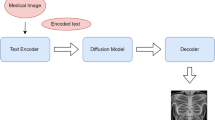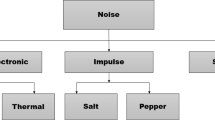Abstract
In medical imaging, the poor quality image specifically the low contrast image may deliver inadequate data for the visual interpretation of affected portions. Hence, a combined approach called exposure based contrast limited bi-histogram equalization method is proposed to improve the visual quality of medical images. The proposed method has three stages: At first, input histogram is sub-divided into two histograms based on the exposure threshold to preserve mean brightness and strengthen the fine details. Then, the two sub histograms are clipped to limit the contrast amplification and a new dynamic range is assigned to each clipped sub-histogram by its exposure threshold value. At last, a contrast-enhanced image is gained by equalizing each clipped sub-histogram individually. Experiments were conducted on a wide variety of medical images to evaluate the performance of proposed method both qualitatively and quantitatively. Extensive quantitative measures show that the proposed technique achieves better performance in terms of peak signal to noise ratio, entropy, contrast ratio, enhancement measures and computational complexity when compared to state of art enhancement methods. The proposed algorithm improves contrast while preserving brightness and visual quality. The proposed method provides better quality for disease examination and diagnosis.












Similar content being viewed by others
References
Abdullah-Al-Wadud M, Ali Akber Dewan M, Hasanul Kabir M, Chae O (2007) A dynamic histogram equalization for image contrast enhancement. IEEE Trans Consum Electron 53(2):593–600
Al-Ameen Z, Sulong G, Rehman A, Al-Dhelaan A, Saba T, Al-Rodhaan M (2015) An innovative technique for contrast enhancement of computed tomography images using normalized gamma-corrected contrast-limited adaptive histogram equalization. EURASIP J Adv Signal Process 2015:32. https://doi.org/10.1186/s13634-015-0214-1
Aquino-Morínigo PB et al (2017) Bi-histogram equalization using two plateau limits. Signal Image Vid Process 11(5):857–864
Benson CC, Lajish VL, Morphology based enhancement and skull stripping of MRI brain images, Proceedings – 2014 International Conference on Intelligent Computing Applications. (2014) 254–257.
Chaira T (2014) An improved medical image enhancement scheme using Type II fuzzy set. Appl Soft Comput. https://doi.org/10.1016/j.asoc.2014.09.004
Chen S, Ramli R (2003) Minimum mean brightness error bi-histogram equalization in contrast enhancement. IEEE Trans Consum Electron 49(4):1310–1319
Chen SD, Ramli R (2003) Contrast enhancement using recursive mean-separate histogram equalization for scalable brightness preservation. IEEE Trans Consum Electron 49(4):1301–1309
Gambino O, Daidone E, Sciortino M, Pirrone R, Ardizzone E, Automatic skull stripping in MRI based on morphological filters and fuzzy c-means segmentation, Proceedings of the Annual International Conference of the IEEE Engineering in Medicine and Biology Society. (2011) 5040–5043.
He D, Deng W, Sun X, Liu M, Ye C, Zhou X (2017) Mammogram enhancement using intuitionistic fuzzy sets. IEEE Trans Biomed Eng 64(8):1803–1814
Huang S-C, Cheng F-C, Chiu Y-S (2013) Efficient contrast enhancement using adaptive gamma correction with weighting distribution. IEEE Trans Image Process 22(3):1032–1041
Ibrahim H, Kong N (2007) Brightness preserving dynamic histogram equalization for image contrast enhancement. IEEE Trans Consum Electron 53(4):1752–1758
Kim Y-T (1997) Contrast enhancement using brightness preserving bi histogram equalization. IEEE Trans Consum Electron 43(1):1–8
Magudeeswaran V, Singh JF (2017) Contrast limited fuzzy adaptive histogram equalization for enhancement of brain images. Int J Imaging Syst Technol 27(1):98–103
Oak PV, Kamathe PRS (2013) Contrast enhancement of brain MRI images using histogram based techniques. Int J Innov Res Electric Electron Instrum Control Eng 1(3):90–94
Ooi CH, Kong NSP, Ibrahim H (2009) Bi-histogram equalization with a plateau limit for digital image enhancement. IEEE Trans Consum Electron 55(4):2072–2080
Pizer SM, Amburm EP, Austin JD, Cromartie R, Geselowitz A, Greer T, Romeny BTH, Zimmerman JB (1987) Adaptive histogram equalization and its variations. Comp Vis Graph Image Process 39(3):355–368
RuiTang J, Isa NAM (2017) Bi-histogram equalization using modified histogram bins. Appl Soft Comput 55:31–43
Satheesh S, Santosh Kumar RT, Prasad KVSVR, Jitender Reddy K (2011) Skull removal of noisy magnetic resonance brain images using contour let transform and morphological operations, Proceedings of 2011 International Conference on Computer Science and Network Technology 4: 2627–2631.
Sengee N, Choi H (2008) Brightness preserving weight clustering histogram equalization. IEEE Trans Consum Electron 54(3):1329–1337
Shakeri M, Dezfoulian MH, Khotanlou H, Barati AH, Masoumi Y (2017) Image contrast enhancement using fuzzy clustering with adaptive cluster parameter and sub-histogram equalization. Digital Signal Process 62:224–237
Singh K, Kapoor R (2014) Image enhancement using exposure based sub image histogram equalization. Pattern Recogn Lett 36(15):10–14
Singh K, Rajiv Kapoor B (2014) Image enhancement via Median-Mean Based Sub-Image Clipped Histogram Equalization. Optik 125:4646–4651
Tang JR, Isa NAM (2014) Adaptive Image Enhancement based on Bi-Histogram Equalization with a clipping limit. Comput Electr Eng 40(8):86–103
Wang Y, Pan Z (2017) Image contrast enhancement using adjacent-blocks-based modification for local histogram equalization. Infrared Phys Technol 86:59–65
Wang Y, Pan Z (2017) An effective histogram modification scheme for image contrast enhancement. Signal Process Image Commun 58:187–198
Wang Y, Zhang B (1999) Image enhancement based on equal area dualistic sub image histogram equalization method. IEEE Trans Consum Electron 45(1):68–75
Yu H, He F, Pan Y (2018) A novel region-based active contour model via local patch similarity measure for image segmentation. Multimed Tools Appl. https://doi.org/10.1007/s11042-018-5697-y
Yu H, He F, Pan Y (2018) A novel segmentation model for medical images with intensity inhomogeneity based on adaptive perturbation. Multimed Tools Appl. https://doi.org/10.1007/s11042-018-6735-5
Zhaoa C, Wanga Z, Lia H, Wua X, Qiaoa S, Sunb J (2019) A new approach for medical image enhancement based onluminance-level modulation and gradient modulation. Biomed Signal Process Control 48:189–196
Zhu Y, Huang C (2012) An adaptive histogram equalization algorithm on the image gray level mapping. Phys Procedia 25:601–608
Acknowledgements
This work was encouraged by PSNA College of Engineering and Technology, Dindigul, India. The authors thank our experts P.B. Barani Kumar, Shriram Varadharajan and the reviewers for their comments on the manuscript.
Author information
Authors and Affiliations
Corresponding author
Ethics declarations
Declarations of interest
The authors declare that there is no conflict of interest for publication of this manuscript.
Additional information
Publisher’s note
Springer Nature remains neutral with regard to jurisdictional claims in published maps and institutional affiliations.
Rights and permissions
About this article
Cite this article
Subramani, B., Veluchamy, M. A fast and effective method for enhancement of contrast resolution properties in medical images. Multimed Tools Appl 79, 7837–7855 (2020). https://doi.org/10.1007/s11042-019-08521-0
Received:
Revised:
Accepted:
Published:
Issue Date:
DOI: https://doi.org/10.1007/s11042-019-08521-0




